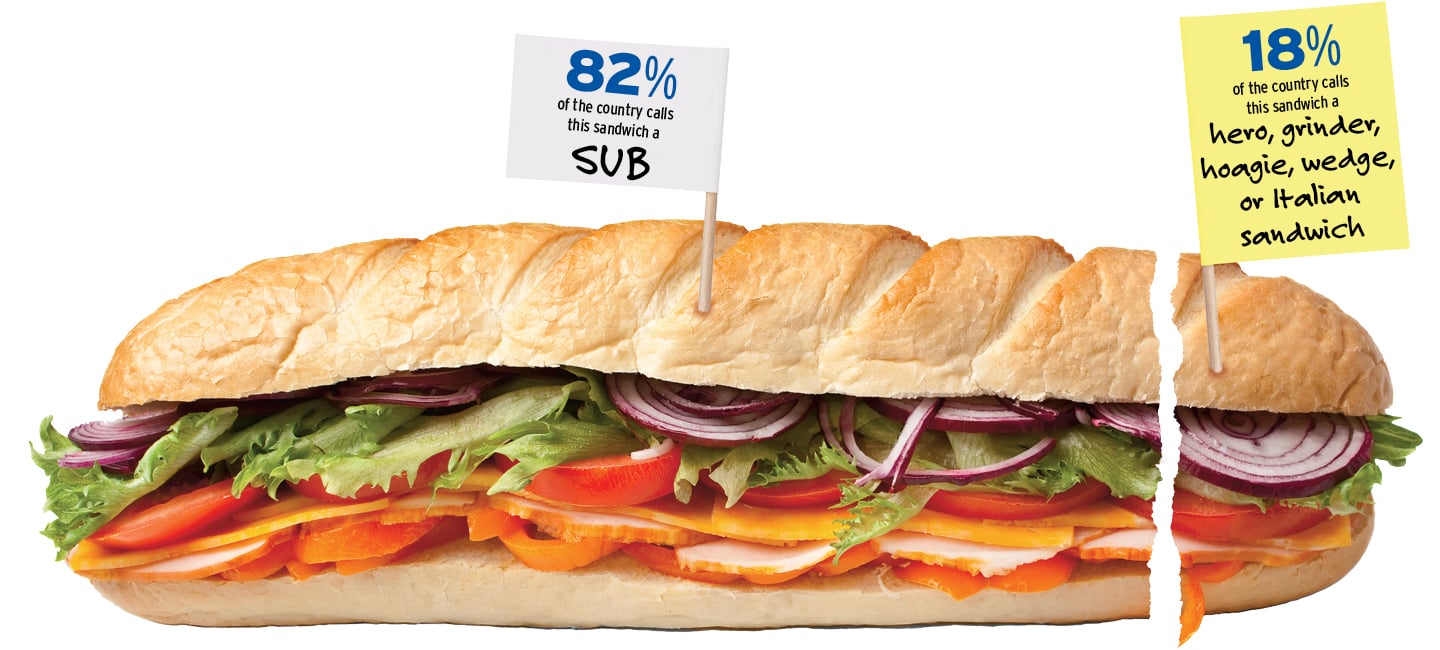What would you call a roll filled with meat, cheese, lettuce, and tomato: a sub, a grinder, or a hero? How about the fizzy drinks that come in a can: Are they soda, pop, or something else?
These are examples of regionalisms—words and phrases that are specific to certain parts of the country. Though we all use regionalisms, many people assume everyone speaks the same way they do. “You might not realize the things that you say that are distinctive,” says Josh Katz, graphics editor at The New York Times and author of the book Speaking American: How Y’all, Youse, and You Guys Talk. “People’s language is very tied up to their sense of identity and their sense of place.”
The data for the maps in Katz’s book came from a dialect survey he created a few years ago for the Times. The survey, which got more than 350,000 responses, asked people what they call common things—such as sugary drinks—and how they pronounce certain words, such as quarter. On the next few pages, you’ll see some of the results. “It’s important to recognize that there’s often no standard American English,” Katz says. “You have different regional expressions, none more right or wrong than any other. . . . Whether you’re calling it a lightning bug or firefly, it’s the same little bug.”

